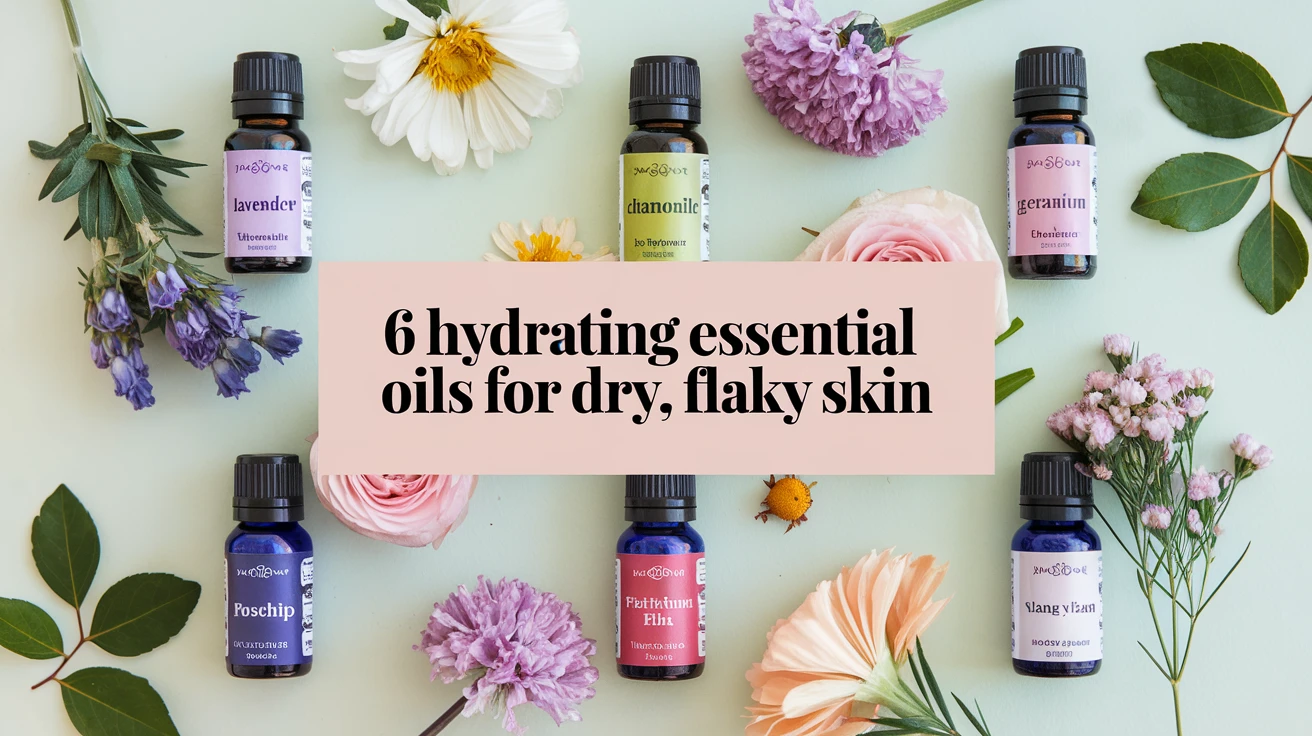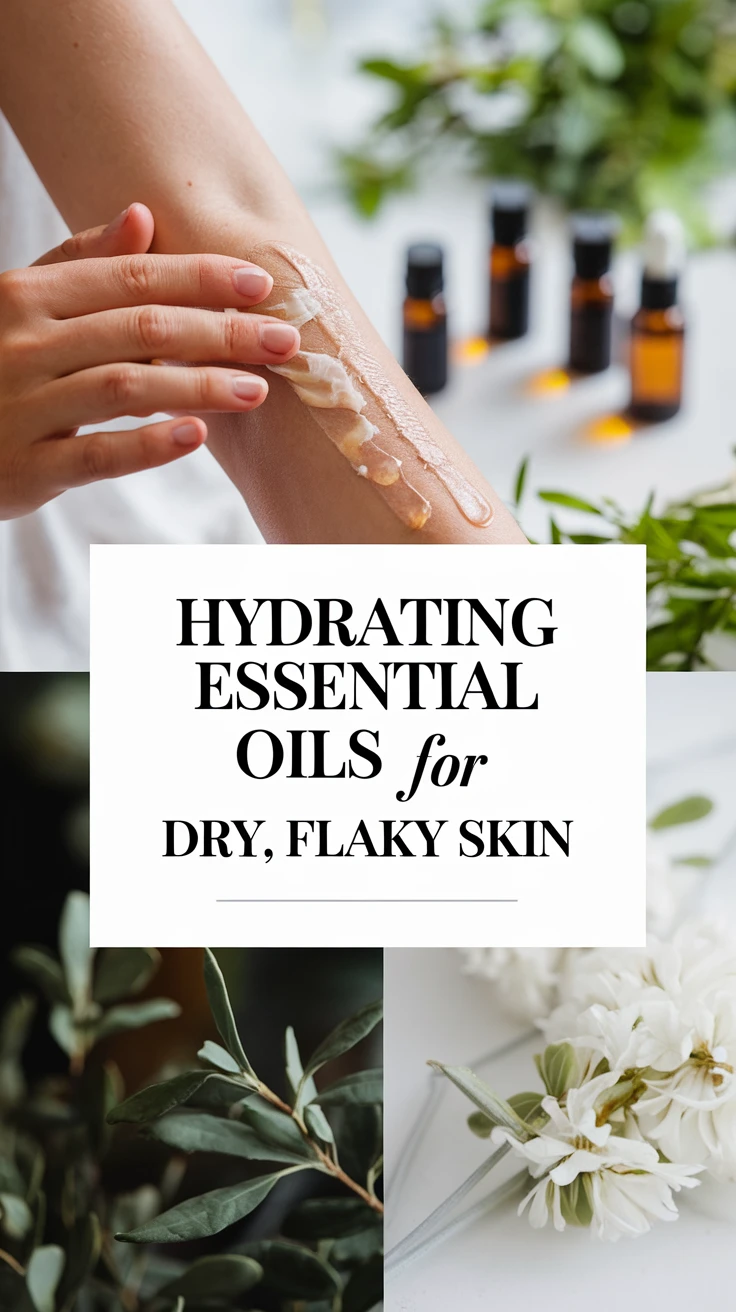
Battling dry, flaky skin can feel like an endless struggle, especially during harsh weather conditions or when dealing with naturally dehydrated skin. I’ve personally fought this battle, trying countless products before discovering the incredible healing power of essential oils. These natural remedies have transformed my skincare routine, and today, I’m excited to share the six most effective essential oils that can help restore moisture and radiance to your skin. Whether you’re dealing with seasonal dryness or chronic skin dehydration, these powerful botanical solutions offer a natural path to smoother, more hydrated skin.
Understanding Dry Skin and Essential Oils
Before diving into specific oils, it’s crucial to understand why our skin becomes dry and how essential oils can help. Dry skin occurs when our skin’s moisture barrier is compromised, leading to water loss and decreased natural oil production. Several factors contribute to this condition:
- Environmental factors (low humidity, cold weather)
- Hot showers and harsh soaps
- Age-related changes
- Dehydration
- Medical conditions
Essential oils work by providing deep moisturization and supporting the skin’s natural barrier function. Their molecular structure allows them to penetrate deeply into the skin, delivering nutrients and moisture where they’re needed most. From my experience working with these natural remedies, I’ve found that the key to success lies in choosing the right combinations and using them correctly.
| Skin Concern | How Essential Oils Help |
|---|---|
| Flakiness | Natural exfoliation and cell renewal |
| Tightness | Deep moisturization and barrier repair |
| Inflammation | Anti-inflammatory properties |
| Rough texture | Smoothing and softening effects |
Top 6 Essential Oils for Dry Skin Relief
1. Lavender Essential Oil
My go-to essential oil for dry skin is lavender. I discovered its benefits during a particularly harsh winter when my skin was at its worst. Lavender oil not only moisturizes but also promotes skin cell regeneration and has natural anti-inflammatory properties. It’s gentle enough for sensitive skin and helps balance sebum production.
2. Chamomile Essential Oil
Chamomile oil has been a game-changer for my sensitive, dry skin. Its gentle nature combined with powerful anti-inflammatory properties makes it perfect for soothing irritated, flaky patches. I’ve found it particularly effective when combined with a carrier oil like jojoba.
3. Geranium Essential Oil
Geranium oil is a natural balancer for the skin’s oil production. It helps regulate sebum levels while providing deep hydration. After incorporating it into my routine, I noticed a significant improvement in my skin’s texture and moisture retention.
4. Frankincense Essential Oil
This ancient oil has become modern skincare gold. Frankincense promotes cell regeneration and helps maintain skin elasticity. I’ve noticed it’s particularly effective for mature dry skin and helps reduce the appearance of fine lines while moisturizing.
5. Rosehip Essential Oil
Rich in vitamins A and C, rosehip oil is excellent for deep hydration and skin repair. It’s become my secret weapon for combating winter dryness and helping fade dark spots simultaneously.
6. Ylang Ylang Essential Oil
This sweet-smelling oil is perfect for balancing skin moisture levels. It helps regulate oil production while providing deep hydration. I’ve found it especially helpful for combination skin that tends toward dryness.
Safe Application Methods
Proper application is crucial for achieving the best results with essential oils. Here’s my tried-and-tested guide for safe and effective use:
| Carrier Oil | Benefits | Mixing Ratio |
|---|---|---|
| Jojoba Oil | Similar to skin’s natural oils | 1 drop EO per 1 tsp |
| Sweet Almond Oil | Light and easily absorbed | 2 drops EO per 1 tsp |
| Coconut Oil | Deep moisturizing | 1-2 drops EO per 1 tsp |
| Argan Oil | Rich in nutrients | 1 drop EO per 1 tsp |
DIY Essential Oil Blends for Dry Skin
After years of experimentation, I’ve developed several effective blends for different skin concerns:
Daily Moisturizing Blend
- 3 drops Lavender
- 2 drops Geranium
- 1 drop Frankincense
- 1 oz Jojoba oil
Intensive Night Treatment
- 2 drops Chamomile
- 2 drops Rosehip
- 1 drop Ylang Ylang
- 1 oz Sweet Almond oil
Conclusion
Essential oils have revolutionized my approach to treating dry skin, and I hope these insights help you achieve the same transformative results. Remember to always patch test new oils and listen to your skin’s needs. With consistent use and proper application, these natural remedies can help you achieve the hydrated, glowing skin you deserve.
Key Takeaways
- Always dilute essential oils with appropriate carrier oils for safe use
- Consistency is key – incorporate oils into your daily skincare routine
- Different oils work better for different skin types and concerns
Frequently Asked Questions
How often should I apply essential oils to my dry skin?
Start with once daily, preferably in the evening, and adjust based on your skin’s response. You can increase to twice daily if needed.
Can I use essential oils directly on my skin?
No, essential oils should always be diluted with a carrier oil to prevent skin irritation and ensure safe application.
How long does it take to see results?
Most people notice improved hydration within 1-2 weeks of consistent use, though individual results may vary.
Can I mix multiple essential oils together?
Yes, creating blends can enhance benefits, but start with 2-3 oils and follow proper dilution ratios.
Are essential oils safe during pregnancy?
Consult your healthcare provider before using essential oils during pregnancy, as some oils may not be safe.
How should I store my essential oils?
Store in dark glass bottles away from direct sunlight and heat, ideally in a cool, dry place.
Can essential oils replace my regular moisturizer?
While beneficial, essential oils work best as a complement to your regular moisturizer rather than a replacement.
What’s the best time to apply essential oils?
Apply after cleansing when skin is slightly damp for better absorption, especially before bed.
Can essential oils cause allergic reactions?
Yes, always perform a patch test before using a new oil, and discontinue use if irritation occurs.
How long do essential oil blends last?
When properly stored, DIY blends typically last 3-6 months. Watch for any changes in smell or appearance.

